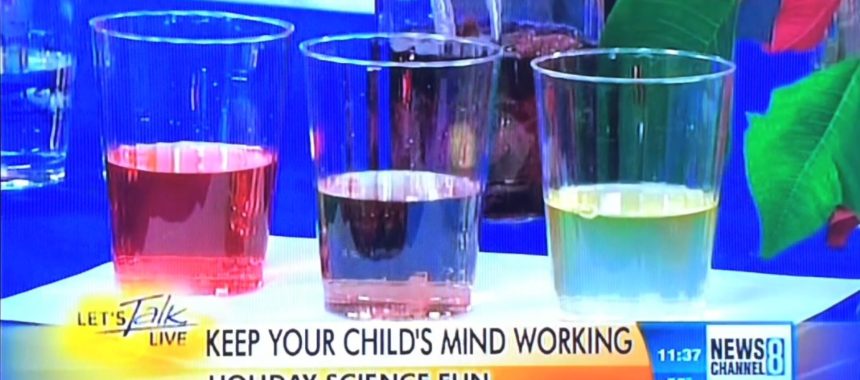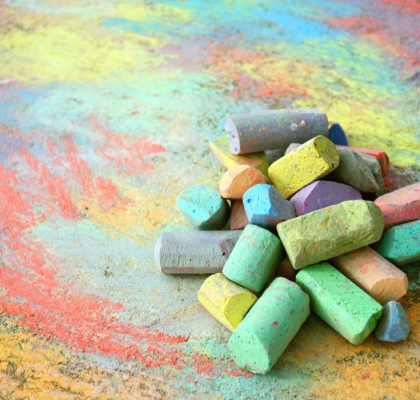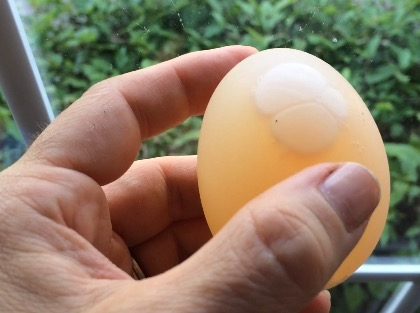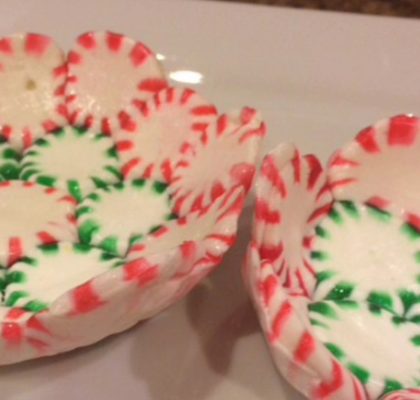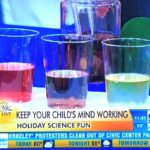 Add to Favorites
Add to Favorites
Turn Your Poinsettia into a pH Indicator
In this science experiment, kids make an acid/base indicator from a poinsettia and use it to test the pH of various liquids.
Simple Explanation: When the indicator is combined with various liquids, there is a chemical reaction. The color change shows that there was a reaction.
The Details: Poinsettias contain a pigment that is a natural acid/base indicator. When the indicator is exposed to an acid or a base, a chemical reaction produces a color change.
Scientists use something called a “pH scale” to determine how acidic or basic a substance is. The pH scale runs from 0-14, with acids between 0 and 6 and bases between 8 and 14. Distilled water is a 7 on the pH scale – right in the middle. This means that water is neither an acid nor a base; it is “neutral.”
The term “acid” comes from the Latin word “acidus” which means “sharp.” Acids taste sour and are corrosive to metals. Of course, you should never, ever taste something to find out what it is! Common acids are vinegar and lemon juice.
Sometimes scientists use the word “alkaline” to refer to bases. Bases feel slippery to the touch (like soap). Common bases are baking soda and antacids.
A color change is a good indication of a chemical reaction. Other indications can be smells, temperature changes or the bubbling and fizzing of gases being produced.
Safety Notes
An adult should boil the poinsettia leaves.
Carefully supervise children if using household chemicals to test as acids or bases, and never ever combine household chemicals, even when disposing of them in the sink. The resulting gases could be toxic.
Materials
Instructions
Boil several red poinsettia leaves until the water becomes a deep reddish-purple. Strain out the leaves and retain the liquid. This is your indicator.
Gather several types of household acids and bases. Acids are things like vinegar, lemon juice, orange juice, ketchup (dilute with water), soy sauce (dilute with water), and toilet bowl cleaner. Bases are things like baking soda, milk of magnesia, antacids, ammonia, cement, and bleach. This experiment works best with liquids that are fairly clear.
Place each test liquid in a separate clear cup. Never, ever combine! You don't know what gases you might produce through a chemical reaction. Be sure to include water as a control substance that is neither an acid or a base.
Test each liquid by adding the same amount of indicator to each -- depending on the size of the glass, about a teaspoon. Acids will turn pink/red/purple. Bases will turn brown/yellow/green/blue. When you are finished, arrange the cups in a rainbow! When disposing of the liquids , be careful not to combine them in the sink. Depending on the chemicals you were testing, combining the liquids could create a toxic gas.
Extension: make another natural pH indicator by boiling purple cabbage, or try using grape juice or red wine.


